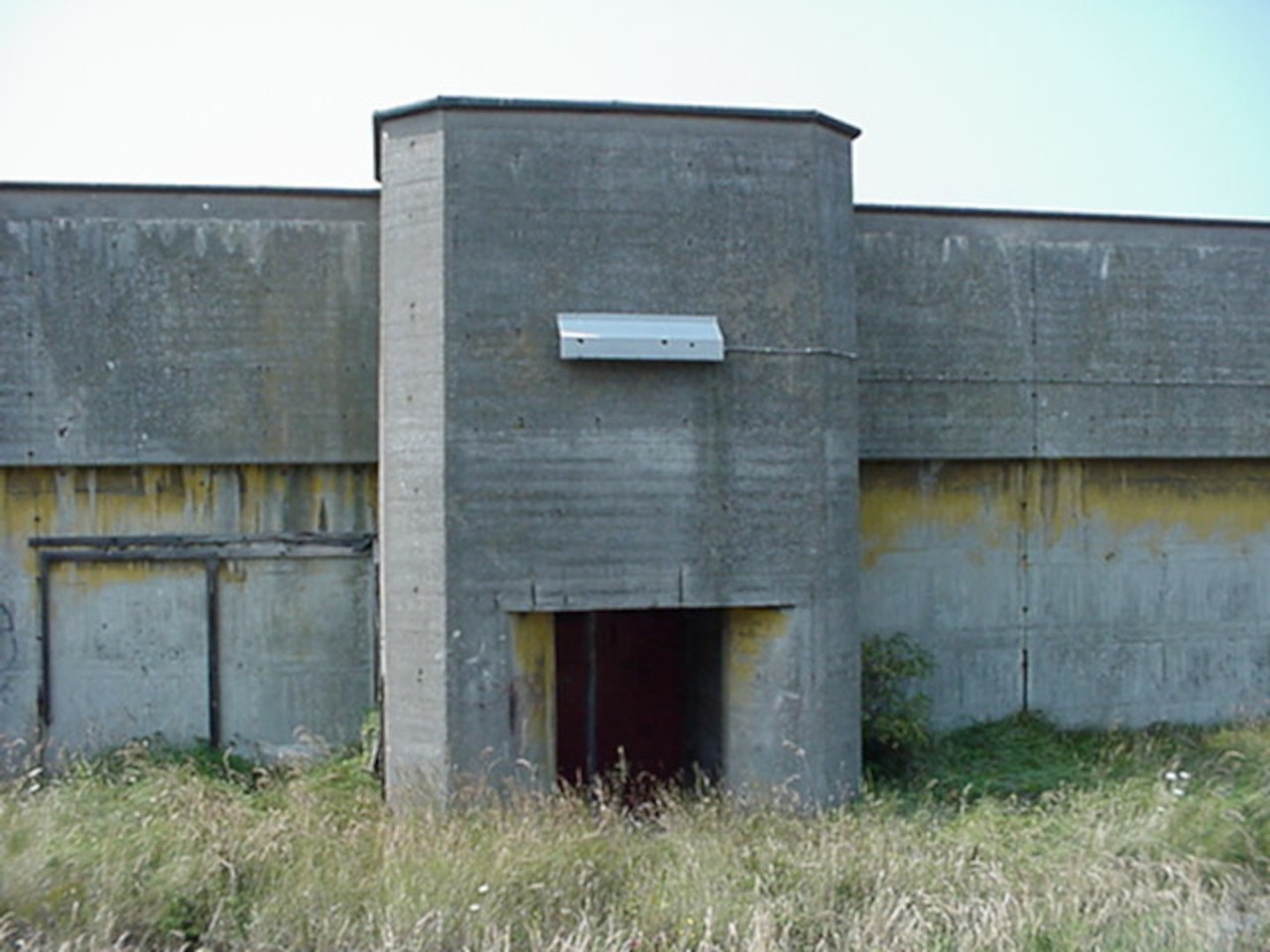By night and in rough weather, the Schnellboote ventured out to lay mines along the British convoy routes in the Channel. The British Motor Torpedo Boats (MTBs) did the same in return. This cat-and-mouse game between both sides continued throughout the war. It was not without danger—encounters between German and British boats often led to fierce skirmishes.
The Torpedo Storage Bunker was built early in the Second World War by order of the Kriegsmarine. It was designed to safely store the large stock of naval mines and torpedoes used by the Schnellboote. The bunker was constructed with thick reinforced concrete walls and roof. Heavy steel doors sealed the entrance, and in case of imminent danger, a concrete block could be lowered in front of the doors, sealing the bunker completely from the outside world.
The mine bunker, or torpedo storage bunker, was assigned the bunker number 5606. Every bunker in the Atlantikwall had its own unique identification number, and so did this ammunition storage facility within Festung IJmuiden.
To blend into the landscape, the bunker was covered with camouflage nets and painted in the colors of the surrounding dunes. In some places, fragments of the original paint can still be seen today.
A small railway track connected the bunker to the Schnellbootbunker, where the boats were moored. This made it possible to transport mines and torpedoes quickly and efficiently.
The bunker can be visited from the outside. Inside, it now houses rehearsal rooms for pop bands—hence its fitting modern name, “Popbunker.” The interior is open to the public once a year on Bunkerdag (Bunker Day).
